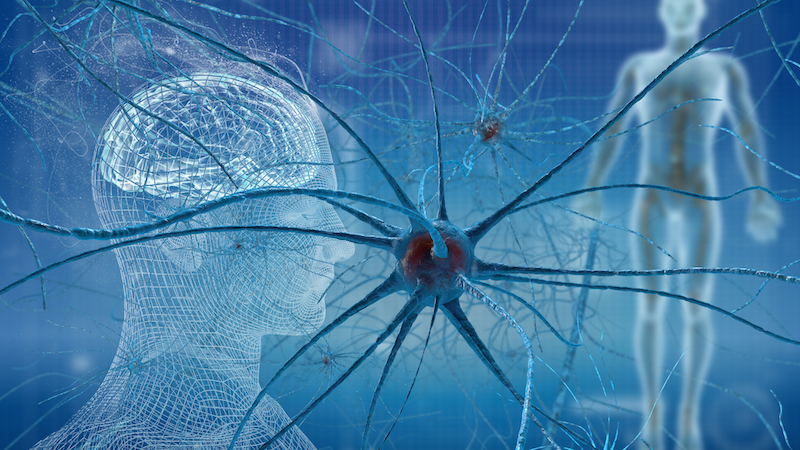
Upper motor neuron disorders represent a complex and challenging category of neurological conditions that significantly impact movement and muscle control. These disorders stem from damage to the upper motor neurons, which are critical in transmitting signals from the brain to the spinal cord, to control voluntary movements. In this comprehensive blog post, we’ll delve into the nature of upper motor neuron disorders, explore their symptoms, discuss current treatment options, and highlight additional relevant information to provide a thorough understanding of these conditions.
What Are Upper Motor Neuron Disorders?
Upper motor neuron (UMN) disorders are characterized by damage to the upper motor neurons whose cell bodies are located in the brain and whose axons travel down the brainstem and spinal cord to lower motor neurons. Upper motor neurons are responsible for initiating and controlling voluntary movements by sending signals from the cerebral cortex to the lower motor neurons and out to the muscles of the body.
When upper motor neurons are damaged, it disrupts the communication pathway, leading to a variety of motor impairments.
Some common upper motor neuron disorders include:
1. Multiple Sclerosis (MS):
MS is an autoimmune disease that results in damage of the protective sheath (myelin) covering nerve fibers, including upper motor neurons. This demyelination disrupts the normal flow of electrical impulses along the nerves, leading to a range of symptoms including muscle weakness, spasticity, and problems with coordination and balance. MS can vary greatly in its course and severity, with some individuals experiencing relapsing-remitting episodes while others have a more progressive form of the disease.
2. Cerebral Palsy:
Cerebral palsy is a group of disorders that affect movement and muscle tone or posture, caused by damage to the developing brain, often involving upper motor neurons. The condition can result from brain injury before, during, or shortly after birth. Symptoms can range from mild motor impairments to severe physical disabilities, affecting one or multiple limbs, and are often accompanied by other neurological issues such as epilepsy or intellectual disabilities
3. Stroke
A stroke occurs when blood flow to a part of the brain is interrupted or reduced, depriving brain tissue of oxygen and nutrients. This can lead to the death of brain cells and damage to the upper motor neurons, resulting in muscle weakness, spasticity, and impaired motor control on one side of the body (hemiparesis or hemiplegia). The extent of the disability depends on the location and severity of the stroke.
4. Incomplete Spinal Cord Injury:
In an incomplete spinal cord injury, some motor and sensory function remains below the level of the injury. Damage to the upper motor neurons in the spinal cord can lead to symptoms such as spasticity, hyperreflexia, and weakness. The degree of impairment varies depending on the specific location and severity of the injury, and some individuals may retain partial mobility and sensation.
5. Primary Lateral Sclerosis (PLS):
PLS is a rare, slowly progressive disorder that affects only the upper motor neurons. Unlike ALS, PLS does not typically involve the lower motor neurons, resulting in less severe muscle atrophy. However, PLS causes significant spasticity and muscle weakness, particularly in the lower limbs, and can lead to severe mobility issues over time.
6. Hereditary Spastic Paraplegia (HSP):
HSP is a group of inherited disorders that primarily affect the upper motor neurons, leading to progressive spasticity and weakness in the lower limbs. The condition can vary in severity, with some individuals experiencing mild gait disturbances, while others may be primary wheelchair users. HSP can be classified into “pure” forms, which primarily affect the legs, and “complex” forms, which may involve other neurological symptoms such as ataxia or cognitive impairment.
7. Progressive Multifocal Leukoencephalopathy (PML):
PML is a rare and often fatal viral infection of the brain that targets the myelin-producing cells, leading to widespread demyelination. This condition can result in damage to the upper motor neurons, causing symptoms such as weakness, spasticity, and cognitive decline. PML is most commonly seen in individuals with compromised immune systems, such as those with HIV/AIDS or those undergoing immunosuppressive therapy.
8. Spinal Stenosis:
Spinal stenosis is the narrowing of the spinal canal, which can compress the spinal cord and nerves. When the upper motor neurons in the spinal cord are compressed, it can lead to symptoms such as spasticity, weakness, and loss of coordination, particularly in the legs. Spinal stenosis most commonly occurs in the lumbar and cervical regions and can be caused by degenerative changes, herniated discs, or congenital conditions.
9. Transverse Myelitis:
Transverse myelitis is an inflammatory condition that affects the spinal cord, leading to damage to the upper motor neurons. This inflammation can cause symptoms such as sudden onset of weakness, sensory disturbances, spasticity, and bladder or bowel dysfunction. Transverse myelitis can occur as an isolated event or as part of a broader neurological condition, such as multiple sclerosis or neuromyelitis optica.
Symptoms of Upper Motor Neuron Disorders
The symptoms of upper motor neuron disorders can vary widely depending on the specific condition and the extent of the damage. Common symptoms include:
Muscle Weakness:
Muscle weakness is one of the most prominent symptoms of upper motor neuron disorders. It can manifest as a general reduction in strength, making it difficult to perform everyday tasks. In conditions like ALS and MS, muscle weakness typically progresses over time, leading to increased disability.
Spasticity:
Spasticity is characterized by increased muscle tone, causing stiffness and resistance to movement. This can result in discomfort, pain, and difficulty with mobility. Spasticity is a hallmark of many upper motor neuron disorders, including PLS and cerebral palsy.
Hyperreflexia:
Hyperreflexia refers to exaggerated reflex responses. For example, a normal knee-jerk reaction might become excessively brisk in individuals with upper motor neuron damage. This heightened reflex activity is due to the loss of inhibitory signals from the brain to the spinal cord.
Clonus:
Clonus involves rapid, repetitive muscle contractions, often seen in the ankles or wrists. This involuntary movement is another sign of disrupted communication between the brain and muscles.
Babinski Sign:
The Babinski sign is an abnormal reflex where the big toe extends upward when the sole of the foot is stimulated. This response is indicative of upper motor neuron damage and is often used as a diagnostic tool.
Difficulty with Fine Motor Skills:
Upper motor neuron disorders can impair fine motor skills, making tasks that require precise hand movements challenging. This symptom is particularly common in conditions like ALS and MS.
Speech and Swallowing Difficulties:
As upper motor neurons controlling the muscles involved in speech and swallowing become damaged, individuals may experience dysarthria (slurred or slow speech) and dysphagia (difficulty swallowing). These symptoms are particularly pronounced in ALS, where these muscles are affected.
Treating Upper Motor Neuron Disorders
Treatment for upper motor neuron disorders aims to manage symptoms, improve quality of life, and slow disease progression. While there is no cure for these conditions, various therapeutic approaches can provide significant benefits:
Medications:
Muscle Relaxants: Medications such as baclofen or tizanidine can help reduce spasticity and improve comfort. These drugs work by interfering with the nerve signals that cause muscle tightness.
Antispasmodics: Drugs like diazepam can alleviate muscle spasms and cramps. These medications are often used in conjunction with physical therapy to enhance mobility.
Disease-Modifying Therapies: For conditions like MS, medications that modify the immune response (e.g., interferons, glatiramer acetate) can help slow disease progression. These treatments aim to reduce the frequency and severity of relapses and prevent new lesions from forming.
Physical Therapy:
Regular physical therapy is crucial for maintaining muscle strength, flexibility, and mobility. Physical therapists design personalized exercise programs tailored to the individual’s specific symptoms and needs. Techniques may include stretching exercises to reduce spasticity, strength training to combat muscle weakness, and gait training to improve walking ability.
Occupational Therapy:
Occupational therapists help patients develop strategies to perform daily activities more easily. They often use adaptive equipment and techniques to enhance independence. This might involve modifying the home environment to be more accessible, teaching energy conservation techniques, and providing tools to aid with dressing, eating, and other activities of daily living.
Speech and Swallowing Therapy:
For individuals with speech and swallowing difficulties, specialized therapy can improve communication skills and reduce the risk of aspiration (food or liquid entering the lungs). Speech-language pathologists work on exercises to strengthen the muscles involved in speech and swallowing and may teach alternative communication methods if necessary.
Assistive Devices:
Mobility aids such as canes, walkers, and wheelchairs can enhance mobility and independence. In some cases, orthotic devices (e.g., braces) may be used to support weakened muscles and improve walking ability. Advanced assistive technology, such as bionic clothing, can also significantly improve quality of life.
Surgical Interventions:
In severe cases of spasticity, surgical procedures like selective dorsal rhizotomy (cutting nerve roots in the spinal cord to reduce spasticity) or intrathecal baclofen pump implantation (delivering muscle relaxants directly to the spinal fluid) may be considered to provide long-term relief. These interventions are typically reserved for individuals who do not respond adequately to other treatments.
Additional Considerations
Living with an upper motor neuron disorder can be challenging, both physically and emotionally. Here are some additional considerations to keep in mind:
Multidisciplinary Care:
A comprehensive, multidisciplinary approach involving neurologists, physical therapists, occupational therapists, speech therapists, and social workers can provide holistic care and support. Regular coordination among these professionals ensures that all aspects of the patient’s health and well-being are addressed.
Support Groups:
Joining support groups for patients and caregivers can offer emotional support, practical advice, and a sense of community. These groups provide a platform for sharing experiences, coping strategies, and information about the latest treatments and research.
Research and Clinical Trials:
Staying informed about ongoing research and participating in clinical trials can provide access to new treatments and contribute to scientific advancements in the field. Many clinical trials investigate novel therapies aimed at slowing disease progression, improving symptoms, or even finding a cure.
Nutrition and Lifestyle:
A balanced diet, regular exercise, and healthy lifestyle choices can positively impact overall health and well-being. Nutritional support is especially important for individuals with swallowing difficulties, as maintaining proper nutrition and hydration can be challenging.
Mental Health:
Addressing mental health is crucial, as living with a chronic condition can lead to anxiety, depression, and stress. Counseling and therapy can provide valuable coping strategies and emotional support. Mindfulness practices, relaxation techniques, and stress management strategies can also be beneficial.
Patient and Caregiver Education:
Educating patients and caregivers about the disease, its progression, and management strategies empowers them to make informed decisions and take an active role in their care. This education should include information about symptom management, potential complications, and available resources.
Conclusion
Upper motor neuron disorders encompass a range of conditions that significantly affect movement and muscle control. While these disorders present substantial challenges, advancements in medical science and therapeutic interventions offer hope for enhanced quality of life.
By understanding the nature of upper motor neuron disorders, recognizing their symptoms, and exploring available treatment options, individuals and caregivers can better navigate the complexities of these conditions. For those affected by upper motor neuron disorders, a multidisciplinary approach is an essential component of comprehensive care.





